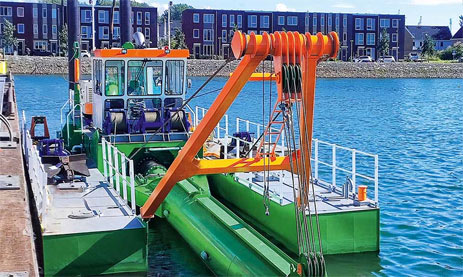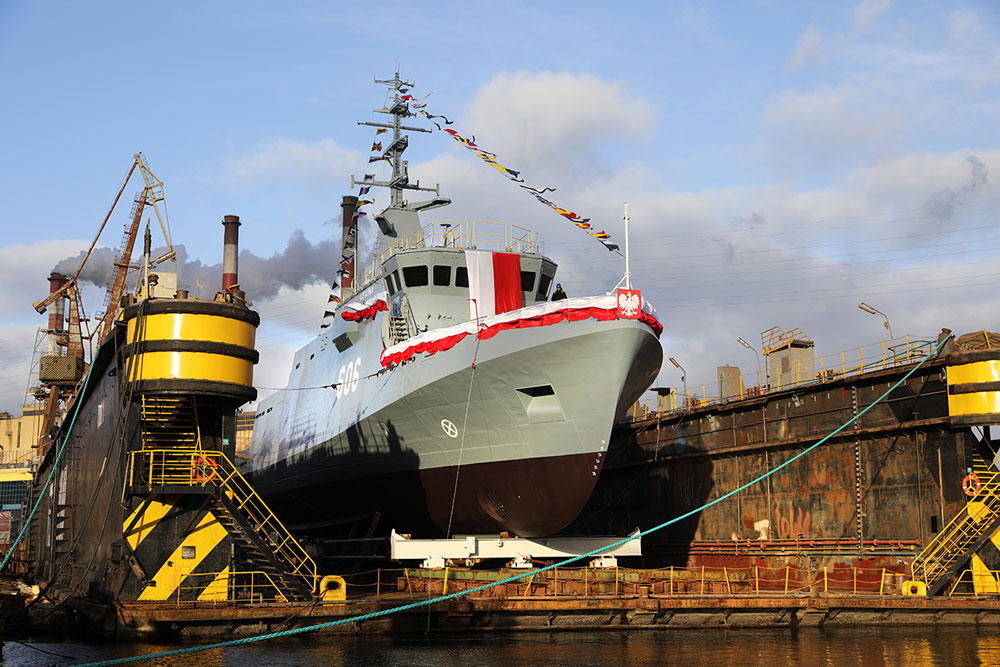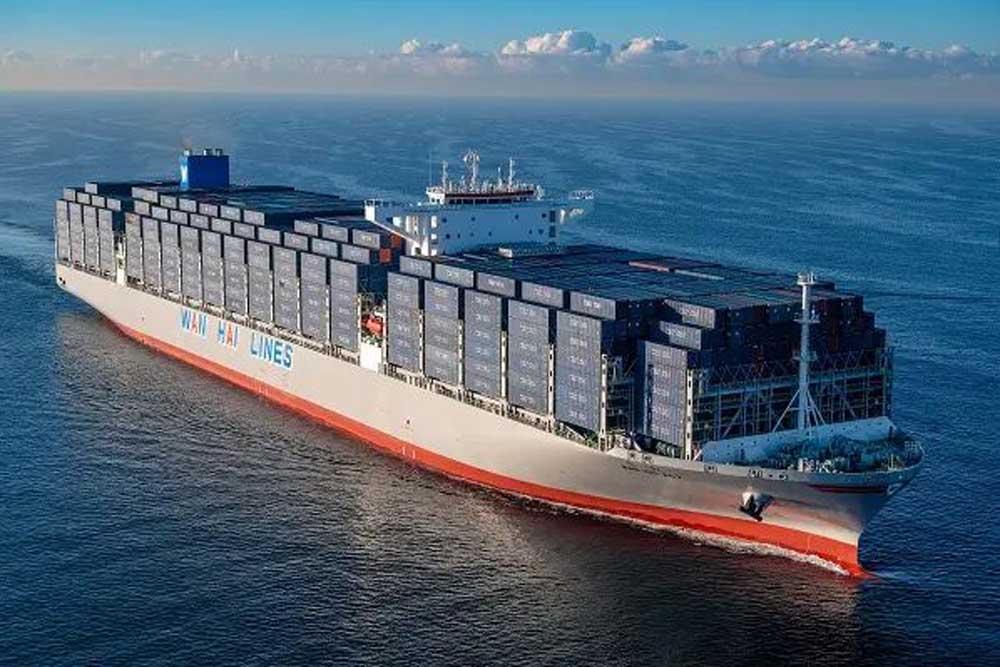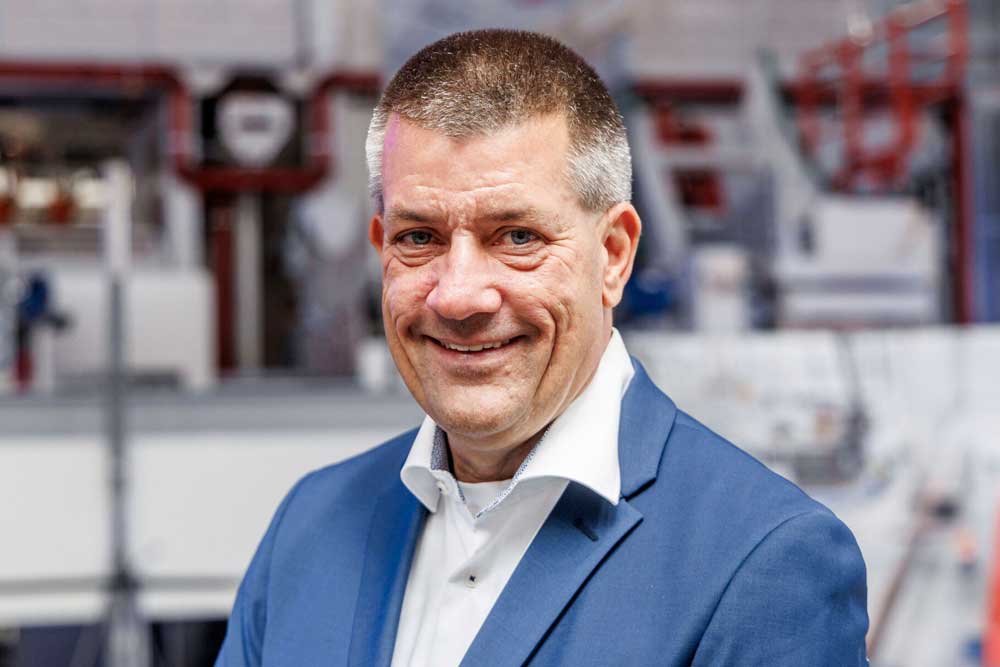Damen Shipyards Group has officially unveiled its latest vessel design, an all-electric Service Operations Vessel (SOV) with a length of 70 meters. Offshore battery charging will enable the offshore supply company to avoid emissions when servicing wind farms.
Three years ago, Damen set out to examine the feasibility of an electric offshore supplier in order to significantly improve the sustainability of ship operation in offshore wind farms. To make this technically possible, two important questions had to be answered. [ds_preview]
“Firstly, this would require an offshore charging facility. Secondly, given that this model would mean an increase in CAPEX costs, it had to be determined whether it was economically viable,” says the Dutch shipyard.
To make offshore charging possible, Damen teamed up with the British company MJR Power & Automation, which has already developed an offshore charging system for a crew transfer vessel. The loading system uses the motion-compensated gangway to establish a connection between the vessel and a turbine or substation offshore, much like a crew transfer. Damen and MJR opted for this method of loading to maximize safety and efficiency. The gangway is controlled from the bridge and requires no manual intervention. This has the additional advantage that the existing offshore infrastructure can be used.
Charging takes place while the offshore utility is in an energy-saving, so-called “green” DP mode, which requires less energy than the hotel load. A full recharge usually requires the energy generated by a single turbine in just a few hours.
The system is designed to Damen’s internationally recognized safety standards, including IEC/IEEE 80005-1, is close to receiving DNV AIP (Approval In Principle) and is designed in accordance with the upcoming offshore charging standards being jointly developed by DNV UK and Norway.
MJR has developed a 4 MW charging plug sufficient for a 70 meter vessel. The company is also working on a scaled-up 8 MW version that will enable the charging of larger vessels up to 90 meters in length.
Paul Cairns, Managing Director of MJR, explains: “The charging system is designed to be safe, convenient and reliable, allowing for quick connection and disconnection of the charging cables. From the outset of this project, the safety of personnel and the integrity of the vessel and offshore facilities in all conditions was a priority. Charging from an offshore installation is highly practical and offers the opportunity to reduce costs and emissions and optimize efficiency without putting personnel or infrastructure in a potentially dangerous situation.”
Offshore supplier must also be economically viable
To answer the second question of whether or not such a ship makes economic sense, Damen carried out a profitability analysis. Many different parameters were taken into account in this analysis, including the investment costs for chargers and batteries, battery replacement, energy costs, theCO2 price, large fluctuations in operating profiles and charging times. The input parameters were validated in close cooperation with wind farm developers and other stakeholders. Many different scenarios were analyzed, but what they all had in common was a good return on investment of between five and 15 years, depending on the scenario.
The SOV 7017 E is equipped with a 15 MWh battery, which is sufficient to power the vessel for an entire day. The battery consists of lithium-iron-phosphate (LFP) instead of the conventional lithium-nickel-manganese-cobalt (NMC) battery type. This is intended to maximize the ship’s sustainability. LFP batteries offer the advantage of being less dependent on sensitive raw materials, particularly cobalt.
LFP batteries also offer improved safety as they are less susceptible to ignition and are easier to contain in the event of an ignition. In the event that the vessel does not have access to power for a short period of time, the shipyard says the offshore supplier has full redundancy and is able to continue operations using a conventional diesel propulsion system.
To further increase efficiency, Damen is relying on its DPX-DRIVETM propulsion layout with four azimuth thrusters, which enable independent propulsion in each direction and are designed to significantly reduce underwater noise levels.
The offshore supply vessel is also said to have all the necessary stowage space, workshops and deck areas to handle the wide range of transportation and work expected of it. The 60 cabins provide comfortable accommodation for the crew and up to 40 technicians.
Damen calls for collaboration to get offshore supply vessels moving
Mark Couwenberg, Damen Product Manager Service Operations Vessels, says: “The launch of the SOV 7017 E shows that the technology is there to make offshore operations fully electric. The reduction in operating costs resulting from direct power generation from the offshore wind farm is a good argument for this model. However, we cannot do this alone. To make this a reality, collaboration across the chain is required, with shipbuilders, ship operators and wind farm developers working together to achieve mutual benefit.”














